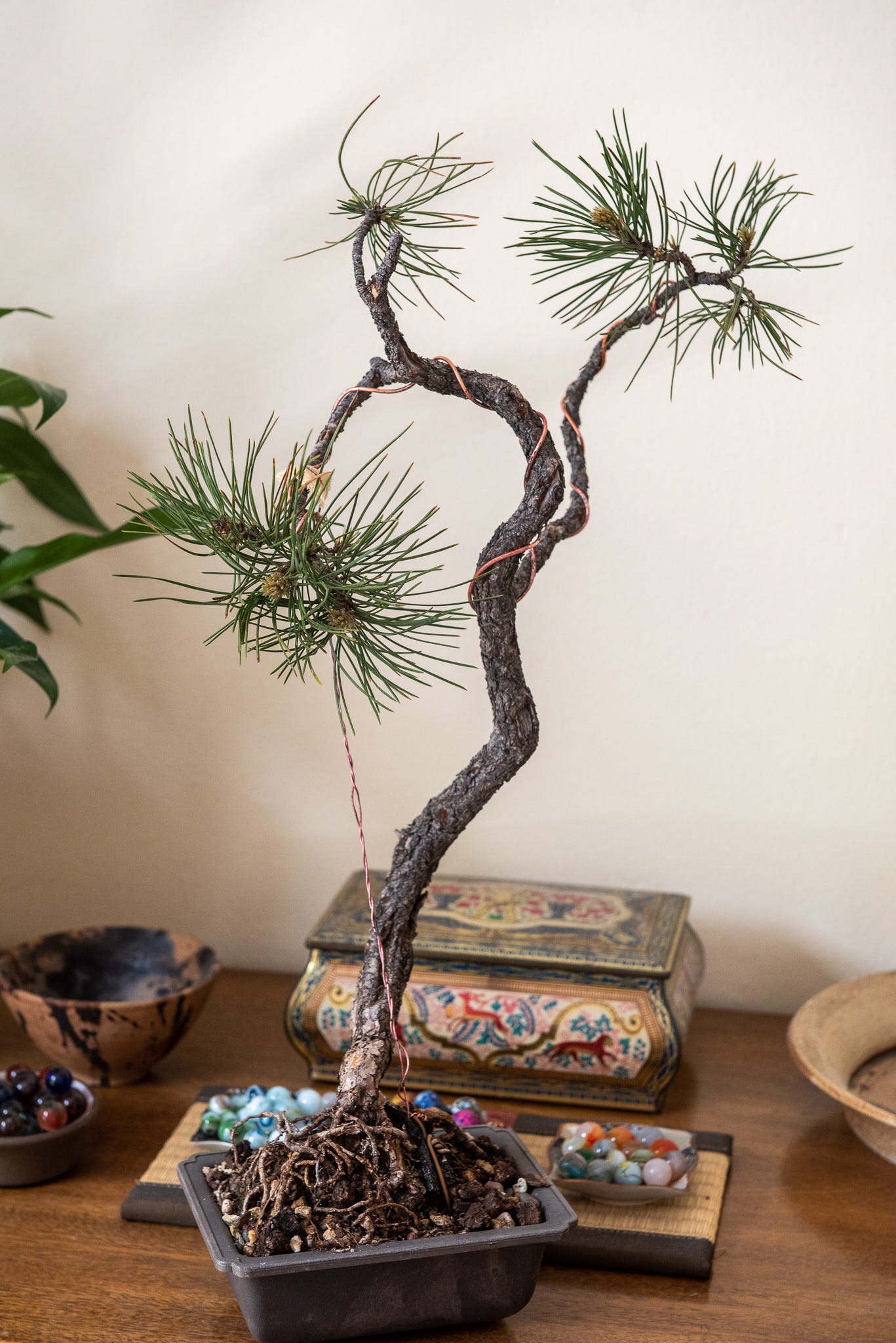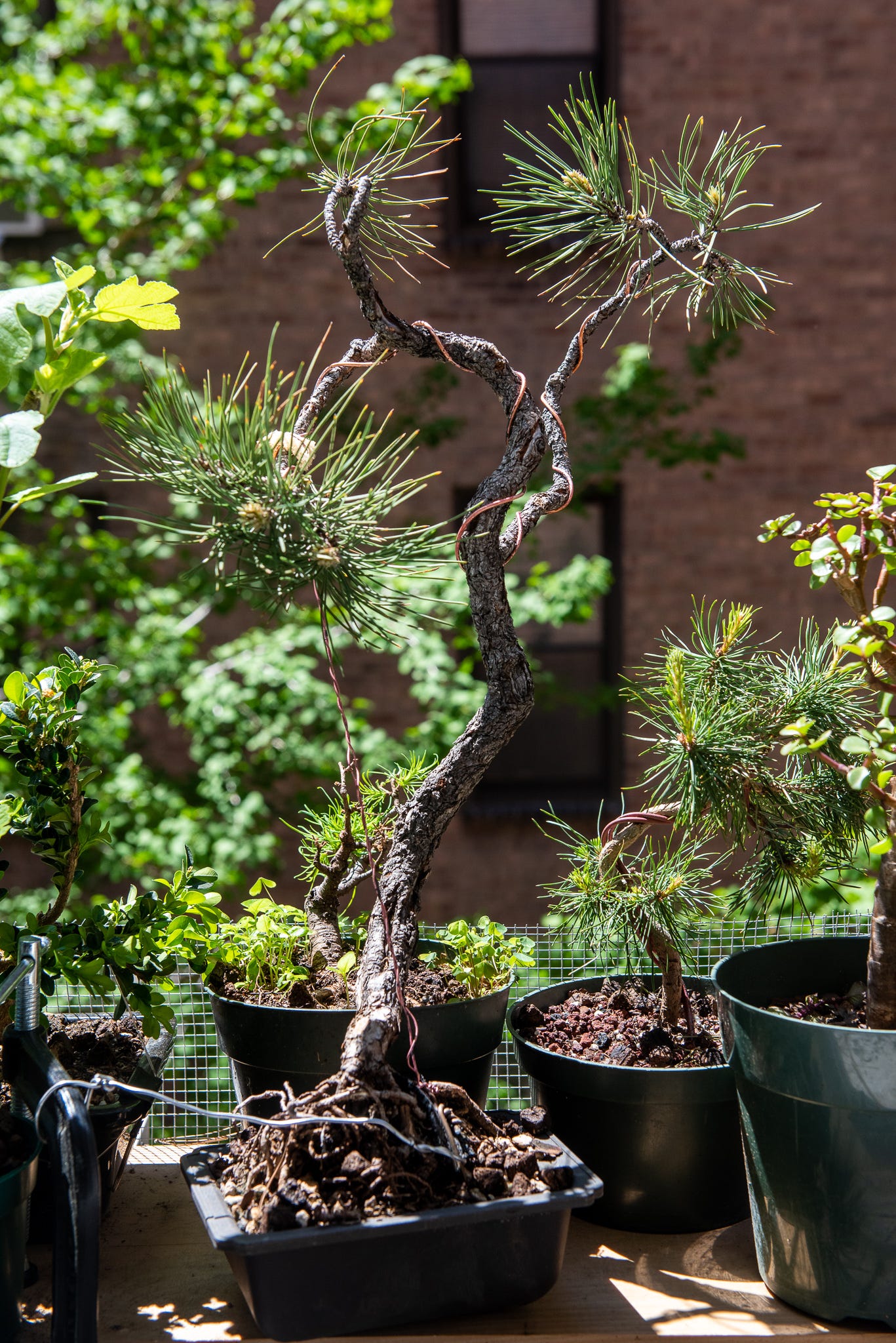There is a style of bonsai that breaks all the rules. Of course it’s my favorite.
Traditional bonsai designs adhere to a kind of golden ratio: mathematical relationships that, when given form in bark and branches, act as a blueprint for an aged miniaturized tree. The bonsai’s height should be six to ten times the diameter of its trunk. The lowest branch, called the defining branch of the tree’s design, should be placed one third of the way up the trunk from the soil. A bonsai doesn’t have to conform to these specifications, but like the rule of thirds in photography, people use them because they work.
Then you have bunjin, aka the literati style, which is a direct descendent of the Chinese penjing landscape designs that inspired the art of bonsai. Traditional bonsai have lots of tight, ramified foliage; literati branches are spare to the extreme. Where most bonsai styles call for a thick trunk that tapers to a narrow top, literati trunks are thin and contorted, as if drawn in a single stroke by a calligrapher’s quill. (Literati, calligrapher, get it?) The tree should look like a tormented, twisted thing that against all odds has managed to cling to life—yet also appear somewhat otherworldly. As the bonsai artist John Naka put it, “It is a dream, an abstract. It is an extremely advanced, significant bonsai design.”
My first attempts at styling a literati were pitiful. Mercifully, those trees fell victim to squirrels or the elements. I decided that for my next try, I’d let nature take the lead.
I must have been feeling myself. I think this newsletter had just gotten its first publicity bump—speaking of, hello new readers!—and I decided to splurge on a tree collected from the wild. The ponderosa pine you see above was found growing in, I kid you not, Deadwood, South Dakota, by a bonsai guy named Andrew Smith who sells trees on a killer ‘90s era website. At $100 plus a substantial shipping cost, it’s the most expensive tree in my collection.
That price is peanuts in high-wire bonsai, but I just adore this pine. It has lots of literati potential as-is, and for a few weeks I just studied the tree, looking at it from different angles in different kinds of light. This is one of my favorite parts of doing bonsai. You aren’t doing anything. You just exist with the tree and get to know it. Eventually ideas coalesce. Not a finished design, but a way forward.
There are a few literati trees I keep coming back to. Their trunks and foliage branches behave in different ways, but they visibly work in tandem. My pine, with its arms stretched akimbo, didn’t do that. There was no obvious direction for your eyes to travel.

This is where wire comes in. By wrapping branches in stiff but malleable copper or aluminum wire, you can reposition branches which will eventually set in place.
I didn’t know what I wanted to do with the right hand branch yet, but I started wrapping and trying some positions. I’ve learned the hard way that you have to listen to your branches like a safe cracker when bending them, so you don’t twist too far and break something irreplaceable.
My result is hardly an “advanced, significant design,” but I like it so far. I still don’t know what to do with the right hand branch. I’m considering breaking off most of it to leave a cracked stump of dead wood called a jin, really crank up the sense of torture on this tree. That won’t be for a while, though. The tree needs to recover and acclimate to its new home.
In the meantime I’ll keep coexisting with it.
Tree reading
I loved this deep dive on tree buds from JP Raite. [Greenery]
A thriving bonsai planting set against an old growth forest in flames. [Reddit]



